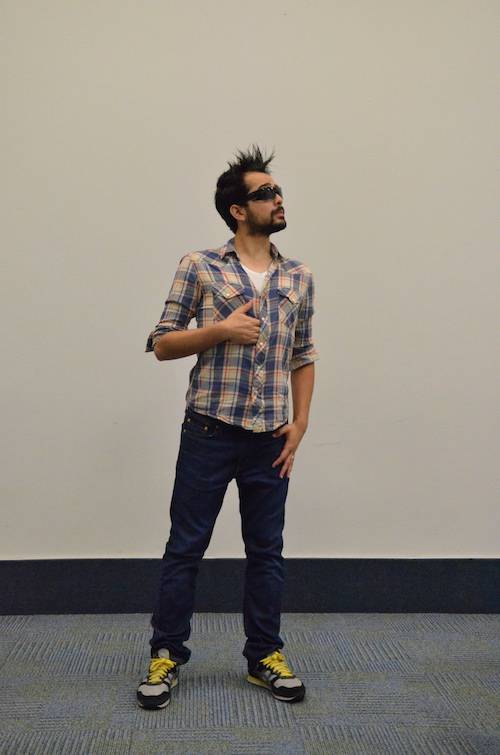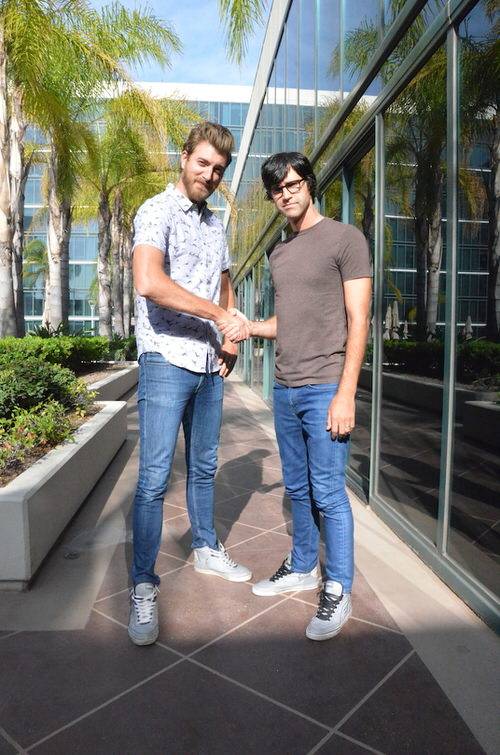In her keynote address at VidCon, YouTube’s unofficial, annual convention, Susan Wojcicki, the Google executive who took over the video site this year, looked over a packed audience at the Anaheim Convention Center. Many of the people seated there were a special breed of YouTube users—the people YouTube calls “creators,” the video artists who long ago graduated from uploading bedroom webcam confessionals to making a real business and drawing their own fan base, sometimes in the millions.
Wojcicki said all the right things at VidCon. “You guys are the real stars,” she told the assembled creators.

But does she truly believe it? Just a couple of weeks after Wojcicki sang YouTube creators’ praises, Reuters reported that the site was in talks to spend millions of dollars with more traditional purveyors of video.
And Wall Street is watching. At a recent Q&A session for Google’s Q2 earnings, an analyst posed the question, “How high do you want to get in the professionally created content funnel?”
That speaks to the popular misconception that YouTube is a site overrun with cat videos and online gamers cursing into their mics—not advertiser-friendly fare.
The odd thing is that YouTube is courting Hollywood even as Hollywood is courting YouTube—or at least YouTube’s stars. Disney, DreamWorks, and Discovery have bought online-video networks which have popular YouTube channels.
It’s understandable why YouTube wants to get cozier with Hollywood. Netflix, Hulu, Amazon, and Yahoo want a piece of the online-video action, and they’ve been snapping up rights to entertainment properties like Saturday Night Live, South Park, and Community. That’s where most industry players see the money—either high-priced advertising dollars or lucrative subscription fees.
YouTube faces pressure from advertisers who want higher-minded fare—or at least shows that are easier to explain than, say, Grav3yardgirl‘s gonzo makeup reviews.
We’ll give Wojcicki a break—she’s new around these parts. But her team at YouTube should be reminding her that it’s YouTube’s intense, passionate fan culture that makes it more than just a place to upload videos.
See also: Stampede Of Teens: What YouTube’s Convention Taught Me About Its Culture Of Superfans
Amazon, Netflix, Hulu, and Yahoo might well bid up rights for TV series. And they can even try to poach YouTube creators by giving them better financial deals than YouTube’s standard terms. But Google’s video rivals can’t replicate that connection between YouTube fans and the creators they subscribe to.
Perhaps most worryingly, YouTube creators are finding ways to make money that don’t rely on Google selling ads for them. They don’t have to jump to another site to cut Google out of the picture.
The Selling Of YouTube
As much as grocery-newsstand tabloids try to convince us that A-list celebrities are “just like us,” fans don’t really believe they’re BFFs. YouTube is different. Creators have a personal relationship with their fans that goes both ways. That’s in part because of the intimacy created by YouTube’s social tools for commenting and sharing. But it’s also because of their grassroots beginnings on the site.
Many YouTube stars started their strange trips to online celebrity as young adults making low-quality webcam videos. While YouTube no longer declares itself a place to “broadcast yourself,” that vibe is still alive and present on the site.
“Underserved markets serve themselves,” says Hank Green, the cocreator of VidCon. “Kids ages 10 to 17 don’t have a lot of options in traditional media, so they make it themselves.”
There’s an unintended consequence of YouTube’s ambivalence about its homegrown stars: Because Google admittedly struggles with low ad rates, and Google takes a 45% cut of all ad sales, YouTube stars have turned to other means of making money from their close connections with fans.
One chief way is by taking sponsorship dollars directly from brands who commission videos featuring products or otherwise pushing a promotional message. Target recently hired four YouTube creators to make a series of videos about decorating dorm rooms.
This bypasses Google: YouTube celebrities (and their management) normally keep all of the money from sponsorships. But it also skirts regulations and, depending on how disclosures are handled, may even break the law in some countries.
YouTube creators interviewed by ReadWrite defended the practice as something their fans understood, and said they used funding from sponsorship deals to make bigger, better videos.
How YouTube Creators Balance Brands And Fans
Joe Penna, known best for his musical YouTube channel mysteryguitarman, believes that staying consistent to his audience’s desires is one way to retain authenticity.

“I always ask for my fans’ opinion in the comments, and then I’ll make a video based on those suggestions,” Penna said. “If this is the highest-rated comment in the previous video, I’ll do it.
“You have to cater to your audience. I use brands and the budgets that they give us to create bigger videos. To work with equipment I wouldn’t be able to afford, to hire more people.”
Rhett McLaughlin and Link Neal, known as Rhett and Link on the site, are a filmmaker duo who got their start on YouTube in 2006. McLaughlin and Neal say they’re on board with brand sponsorship because they are able to craft it in a way that’s unique to their style.
“Back when we made our video ‘Two Guys, 600 Pillows’, we had a pillow manufacturing company sponsor the video,” says Neal. “But we communicate to our fans that this wouldn’t exist without the brand. We weren’t going to go out and buy a literal truckload of pillows. We said to our fans, ‘Hey, we can’t afford 600 pillows unless the pillow manufacturer is involved.’ We presented it as a win-win proposition.”

The pair say they’re aware of the culture shift that’s happening on YouTube. But they say that even as lines blur between old and new media, they want to stick with YouTube.
“More people are getting involved, more people from traditional media are trying to come over here and have a foothold,” says McLaughlin. “We don’t have a jump-ship mentality as soon as we get an offer from traditional media, because we have this amazing thing we’ve been able to build and maintain that we have control of, that we own.”
YouTube creator Freddie Wong and his team at RocketJump Studios have been racking up around five million views per episode of Video Game High School. The scripted comedy, about a high school in the near future where students participate in competitive video games, rivals the style, quality, and writing of many half-hour shows on television today.
“It’s a throwback to high school movies, the coming of age stories that we grew up with, John Hughes movies [like] The Breakfast Club,” says Wong. “We kind of lost a bit of that. It was fun to take that world, that feeling, and put it into the world of video games. I think it resonates because it’s an idea a lot of kids fantasize about. It’s a wish fulfillment thing.”
Wong has taken some sponsorship dollars—for example, his “Gamer Commute” video, backed by Samsung, attracted 5 million views. But he’s finding different ways to fund his videos—like raising money directly from fans for new shows. Rocketjump raised more than $900,000 on Kickstarter to fund the show’s third season. It’s another model that bypasses Google—and avoids the compromises of dollars from brands.
What YouTube Needs To Do
We won’t argue that Wojcicki needs to keep an eye on Hollywood—and her rivals who are aggressively cutting deals there. But there’s far more work she can do with the one-of-a-kind stars YouTube already has.
YouTube is working to improve the site’s tools for creators. YouTube’s new Google Preferred program is attempting to charge advertisers higher rates for ads on the top 5% of channels. And it’s now advertising YouTube stars like Michelle Phan in billboards and other off-YouTube advertising campaigns.
What more could YouTube do? At some point, it will have to tackle around YouTube creators’ financial relationships with brands. YouTube’s parent company, Google, has pretty strict views about disclosure of advertorial in Web pages. Will it start applying those rules to videos, too? Or will Google take a relaxed view—if it gets a cut of the action?
Right now, there’s an uneasy balance between the passions of fans, the hard work of YouTube creators, the interests of brands, and Google’s need to make money from the billions it’s poured into YouTube since it bought it eight years ago.
If Wojcicki can figure all of that out, she’ll have a Hollywood ending.
Images by Stephanie Chan and Gage Skidmore

















